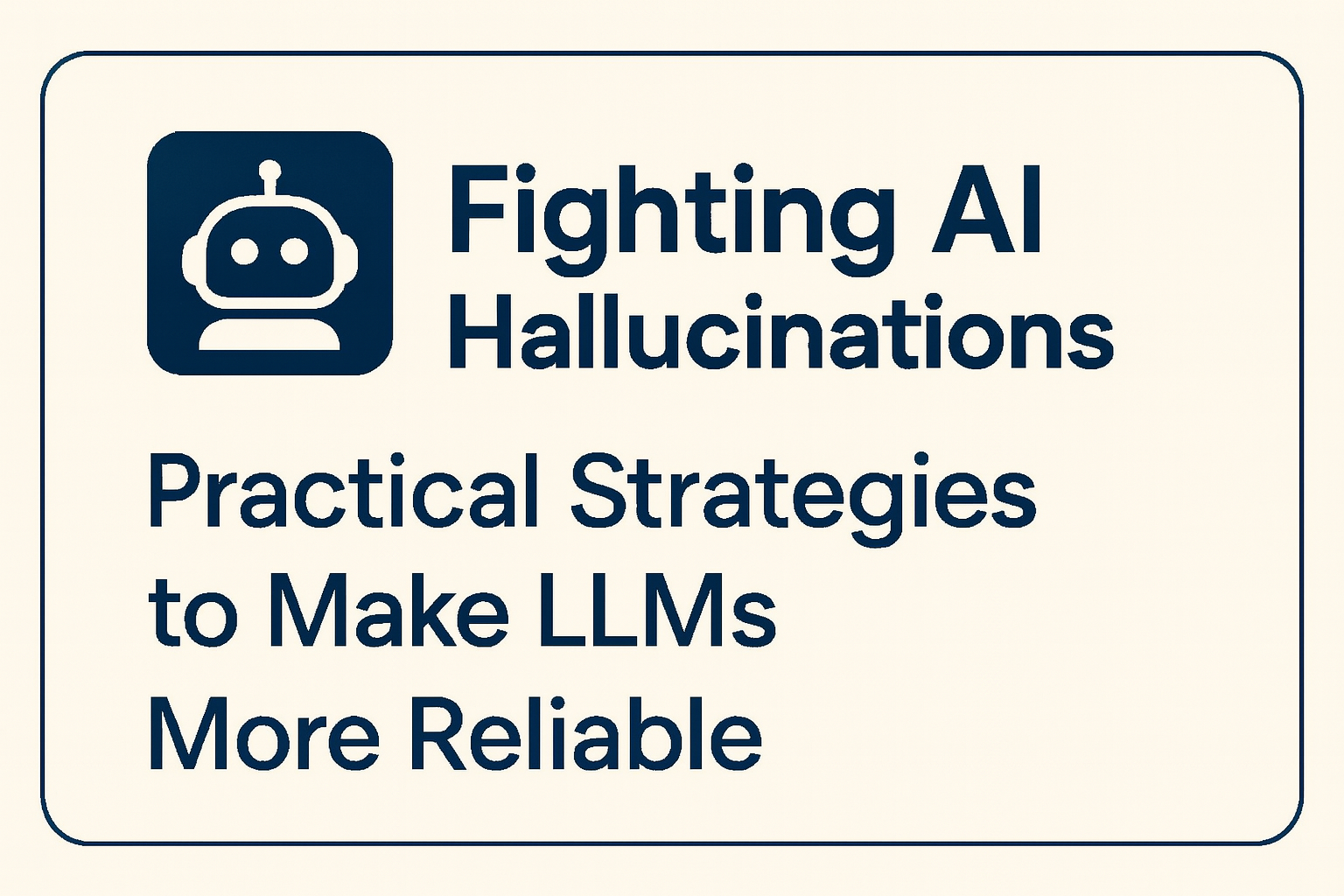In the context of Large Language Models (LLMs) like GPT, hallucination refers to the generation of outputs that are:
Incorrect (factually wrong, fabricated data, fake citations).
Irrelevant (off-topic or nonsensical).
Unverifiable (confidently providing information with no real-world source).

Example: If you ask an LLM, “Who won the FIFA World Cup in 2026?” (before it has access to that info), it might confidently say “Brazil won” — even though the event hasn’t happened yet.
This happens because LLMs predict the next word based on training data patterns — they don’t “know” facts, but simulate knowledge.
- Probabilistic nature of LLMs – They generate text based on likelihood, not truth.
- Training data gaps – If data is missing or biased, the model “fills in the blanks.”
- Prompt ambiguity – Vague or tricky prompts can confuse the model.
- Overconfidence in responses – LLMs often present guesses as facts.
- Outdated knowledge cutoff – Without real-time updates, they may fabricate details about recent events.
| Technique | Pros | Cons | When to Use |
| Prompt Engineering | Easy to apply, no extra infra needed, works instantly. | Limited impact on deep factual errors; requires user skill. | Everyday use, quick fixes, non-critical queries. |
| Retrieval-Augmented Generation (RAG) | Strong factual grounding, reduces fabrication, scalable. | Needs integration infra; retrieval quality affects output. | Enterprise apps, customer support, knowledge-based tasks |
| Fine-tuning / Domain Adaptation | Improves accuracy in niche areas, reduces hallucinations for specialized tasks. | Expensive, time-consuming, risks overfitting. | Healthcare, finance, legal, technical enterprise apps. |
| Ensemble Methods | Reduces error by consensus; useful for edge cases. | Higher compute cost; may still propagate common biases. | Critical analysis, multi-perspective tasks, high-risk domains. |
